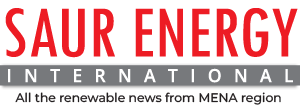Jordan is making new plans for how it powers homes, offices, and factories. The goal is clear: by the year 2033, half of the country’s electricity should come from renewable energy sources like sunlight and wind. Right now, about 27 out of every 100 units of electricity in Jordan come from renewables. The rest comes mostly from natural gas, which is brought in from other countries.
Amani Azzam, who works with the Ministry of Energy and Mineral Resources, shared that relying so much on imported gas has created challenges. The country wants to be less dependent and more energy secure. So, Jordan is aiming for a big change in just under ten years.
One part of this shift includes solar power projects already set up in dry, sunny parts of the country. For example, in Ma’an, rows of solar panels catch sunlight and produce about 150 megawatts (MW) of electricity. That’s enough to power thousands of homes.
Then there’s the Tafila Wind Farm. This project, with spinning white turbines, adds another 117 MW to the national grid. There’s also a smaller wind farm called the Shobak Wind Project. It quietly started running in 2021, adding 45 MW to the grid with help from local and international investors.
Jordan isn’t stopping there. There are now ideas on the table to test battery storage for energy. This means power from the sun or wind can be saved for later. The plan is to start with about 30 MW worth of battery storage in the near future.
Meanwhile, out in the eastern desert, Jordan is also working on a natural gas field called Risha. If developed fully, this field could meet over half of the country’s energy needs from inside its own borders.
Smaller solar setups are being planned too, like putting solar panels on rooftops of schools, hospitals, and factories. These units might only produce a few hundred kilowatts each, but every bit adds up.


